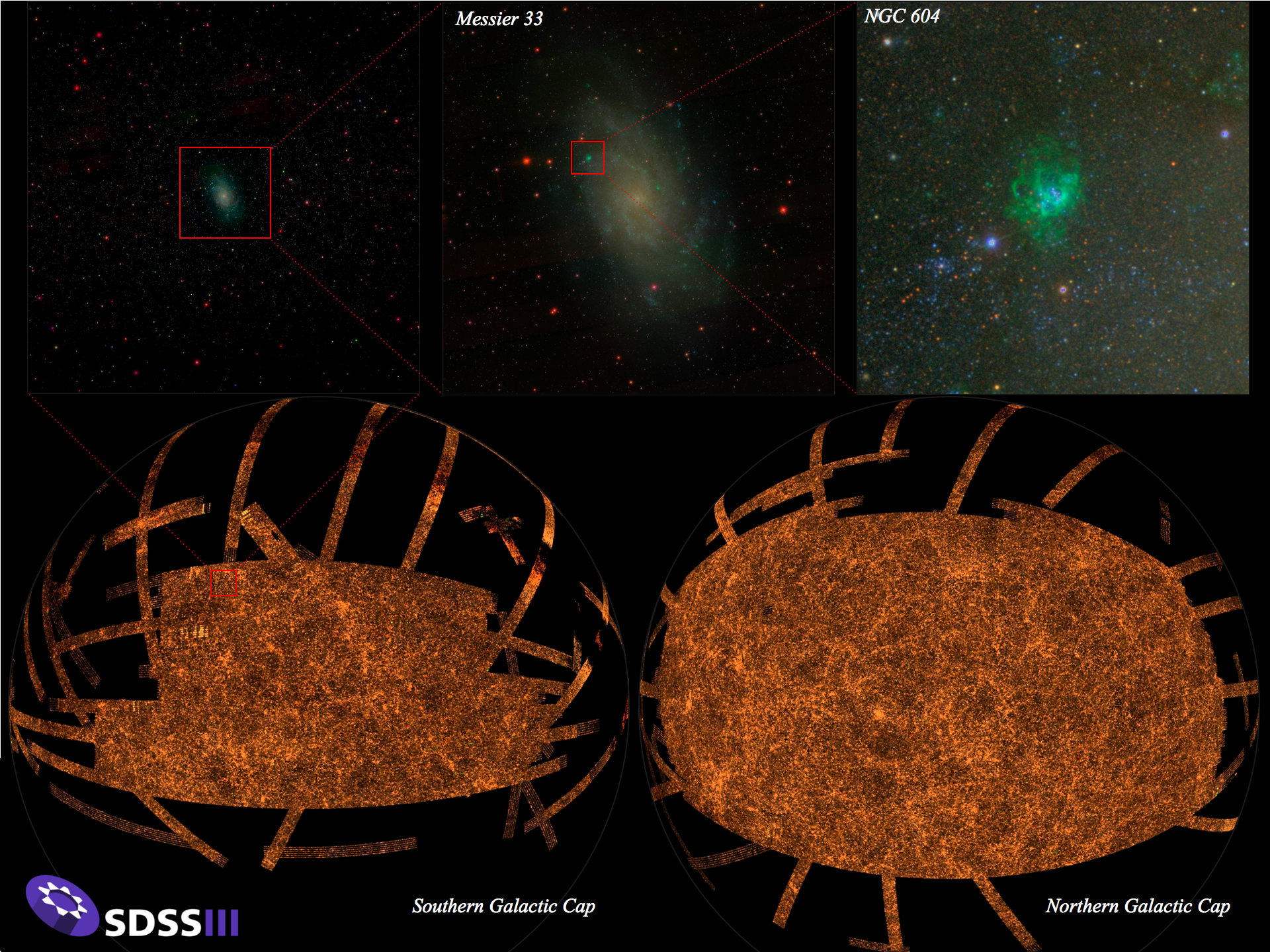The Sloan Digital Sky Survey imaged over 30% of the sky between the years of 1998-2008, creating the largest digital colour image of the sky ever taken. To view all of the SDSS imaging at once, would require 500,000 HD televisions (so it can be displayed at full resolution), and with more than a trillion pixels, this image dwarfs the 1.5 billion pixel image that NASA recently claimed was the biggest ever taken.
The SDSS Camera which took all of this imaging is now retired, and was collected by the Smithsonian Institution, to be packed away in a basement as an “artifact of scientific significance”.

The SDSS Camera in its current home – a basement of the Smithsonian Museum in Washington, D.C. Image Credit: Xavier Poultney, SDSS.
The SDSS camera was made by arranging together an array of thirty, 2048×2048 pixel CCD chips. In the 1990s this was state-of-the-art, and even today a 126 Megapixel camera is nothing to sniff at (e.g the current state-of-the-art is DECam which has 62 CCDs and a total of 520 Megapixels).
The CCD chips in the SDSS camera were aligned in five columns, each covered by one of the five filters used to make the colour imaging (the u-, g-, r-, i- and z-bands, roughly corresponding to collecting light in the near-ultraviolet, green, red, near-infrared and a bit less near-infrared respectively).

An illustration of the arrangement of the CCDs and filters on the camera. The filters from top to bottom are r, i, u, z and g-band. Image credit: SDSS.
This arrangement meant that the camera could take images continuously as the Earth rotated and moved it with respect to the sky overhead. SDSS images are therefore arranged in long stripes of constant Declination across the sky (the most famous being “Stripe 82” which was imaged many times). You can make out some of these stripes around the edges of the stitched together image (the “legs of the orange spider” below).

Orange Spider! This illustration shows the SDSS imaging on many scales. The picture in the top left shows the SDSS view of a small part of the sky, centered on the galaxy Messier 33 (M33). The middle and right top pictures are further zoom-ins on M33. The figure at the bottom is a map of the whole sky derived from the SDSS image. Visible in the map are the clusters and walls of galaxies that are the largest structures in the entire universe. Figure credit: M. Blanton and SDSS
All SDSS imaging is publicly available and can be explored online via the SDSS Skyserver. The Navigate Tool is especially fun as you can scroll around the entire image.
A much more technical description of the camera can be found in Gunn et al. (1998) and in the SDSS-I project book.
This post is part of the SDSS Celebration of the International Year of Light 2015, in which we aim to post an article a month about how SDSS uses light in our mission to study the Universe.
Pingback: SDSS Celebrates the International Year of Light 2015 | Science Blog from the SDSS
Is it possible for sdss to acquire a new camera to enable imaging ofmore parts of the sky since many parts if the sky are not imaged and most galaxies have no measured redshifts, it would be awesome if sdss could continue producing good quality images of galaxies clusters, stars and other objects in all parts of the sky including the galactic plane, and the southern celestial hemisphere
Hi Victor. SDSS will not be getting a new camera, because other groups are also taking digital images of the sky! SkyMapper is observing the southern celestial sky, PanSTARRS has recently completed doing the complete northern hemisphere, and soon LSST will be imaging the whole southern sky repeatedly (about once every three days).
Pingback: How SDSS Uses Light to Find Rocks in Space | Science Blog from the SDSS